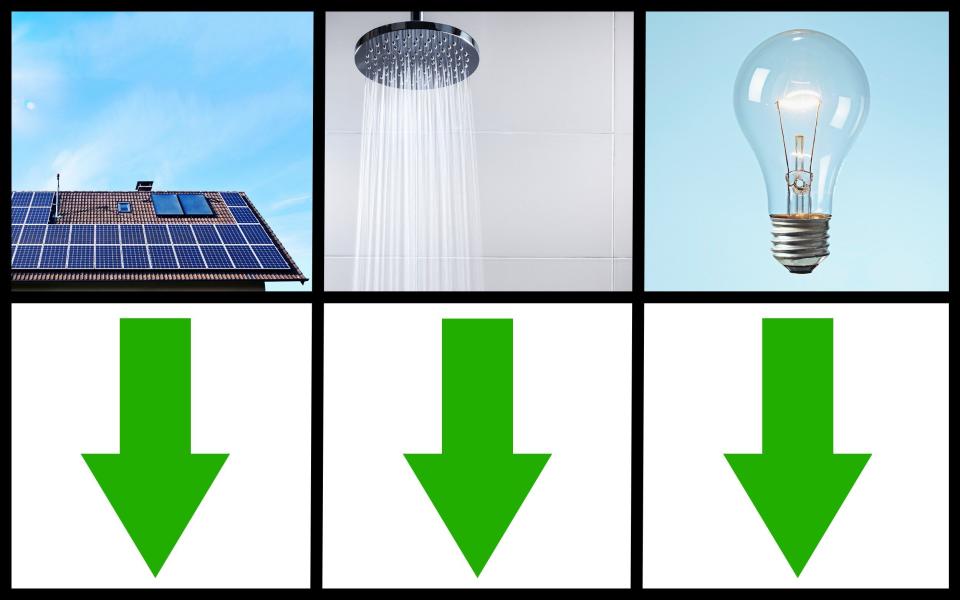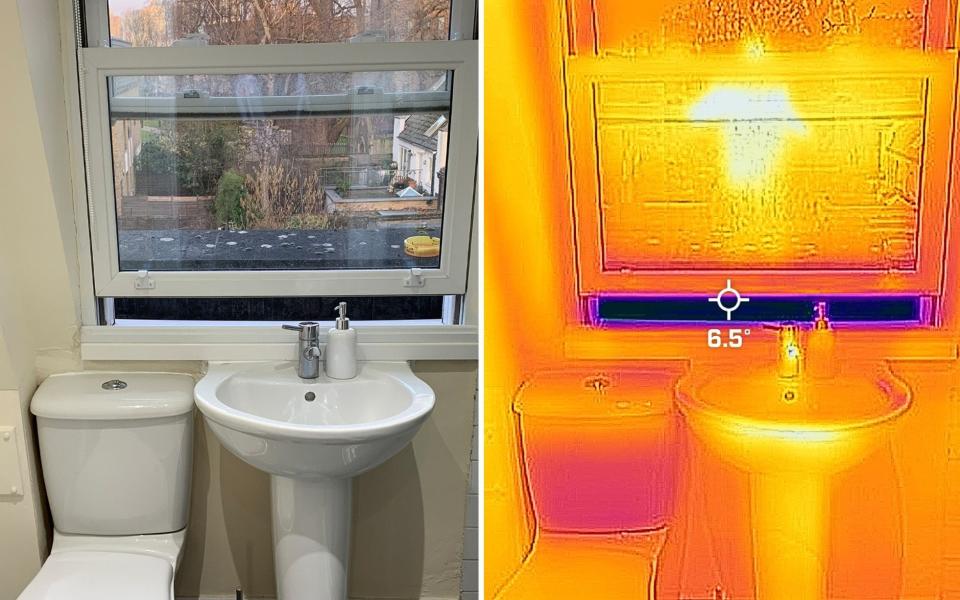How landlords can hit their new EPC targets – as cheaply as possible

New energy efficiency rules which will require landlords to provide well-insulated homes threaten to cost investors thousands of pounds.
Government proposals will force landlords to upgrade the energy efficiency of properties they let to meet minimum standards within the next five years, as part of the wider drive to achieve the UK’s “net zero” targets by 2050.
The work needed could involve anything from insulating an attic at a cost of a few hundred pounds, or overhauling the energy network and installing a heat pump and solar panels – at a cost of thousands of pounds.
But the good news is that energy-efficient homes are commanding higher house prices, making the investment increasingly worthwhile.
So what do you need to do to upgrade your buy-to-let portfolio, and what is the most cost-effective way of doing so?
What is an EPC and how do you improve one?
Your property’s Energy Performance Certificate (EPC) is your ticket to a government-approved level of energy efficiency. Having one is a legal requirement if you are selling, leasing or renting a property.
EPCs are calculated based on two factors: the amount of energy used per square metre, and the level of carbon emissions per year (measured in tonnes).
Published EPCs are all available through a government portal. If you have recently bought a buy-to-let, you should already have an EPC provided by the seller, and if your current one is about to expire, another government portal will list nearby accredited assessors – there is a small fee for the assessment, normally of around £30 to £50.
EPC ratings run from A (extremely efficient) to G (extremely inefficient). Landlords are expected to achieve a C-rating by 2028, under government proposals.
Law changes in 2021 have meant landlords can be fined up to £5,000 if their property is rated F or G, but new plans could see fines reach as high as £30,000.
Your own EPC will suggest what improvements could be made to your property to upgrade its efficiency and reach the next stage.
In 2021, the Department for Business, Energy and Industrial Strategy (Beis) closed a consultation regarding “improving the Energy Performance of Privately Rented Homes in England and Wales” but the results have yet to be published, much to the frustration of buy-to-let landlords.
In the consultation, it was proposed that all rental properties should be EPC C-rated by 2025. In March, the new Department for Energy Security and Net Zero, which replaced Beis, extended the deadline until 2028.
Increasingly, tenants are taking an interest in a property’s EPC-rating, conscious that an energy-inefficient property will incur potentially unaffordable heating bills. However, the National Residential Landlords Association, a trade body, said the competitive rental market limits how picky tenants can afford to be.
Chris Norris, of the NRLA, said: “For years and years there’s been an assessment that tenants will start asking about energy efficiency and paying more for energy efficient properties.
“Tenants will ask the standard questions – double glazing and general heating expenses, but a high EPC comes quite a long way low down the list of what tenants are looking for. Amenities and space still come much higher.”
Where should I start?
The majority of the rental housing stock has already ticked off the basic improvements of double-glazing and cavity insulation, according to the NRLA, which estimates only 30pc of rental houses are D- or E-rated. At present, a property must have at least an E-rated performance certificate to be let.
Landlords with the aforementioned E- or D- rating who hope to achieve the coveted EPC C could take advantage of a “quick win” by replacing incandescent or halogen bulbs with LED alternatives, according to emergency repairs service Homeserve. The energy-efficient bulbs could bump up low-rated property one or two ratings, the company suggested.
As years passed with no result from the Beis consultation, landlords were left unsure of what else to prioritise. Further details are expected to be announced by the Government on Thursday.
If the new Department for Energy Security and Net Zero maintains a commitment to lower bills then replacing inefficient gas boilers with more efficient ones would enhance a property’s EPC.
But if the Government shifts the goalposts and puts carbon emissions above all else, then pivoting to electric heating by way of a heat pump may be more heavily rewarded.
Chris Norris, of the NRLA, said: “Some landlords are sitting back a little bit, waiting on further government announcements. Yes, they’re thinking about the bottom line but also what represents the most effective way to avoid leaving their properties empty for too long.”
Mr Norris said it was “difficult to recommend big jobs at the moment” such as heat pumps or solar panels until the results of the consultation are published, adding that such improvements are “not very tax efficient”.
He said: “If I want to replace a gas boiler with another gas boiler that’s a revenue expense, but if I replace it with a heat pump that’s a capital expense.”
How much will it cost?
Evidently, upgrading an E-rated property to meet the proposed C-rated standard will come with a heftier price tag than it would for a D-rated home. But landlords should expect the Government to cap the required amount of spending.
Government proposals include a £10,000 cap on the maximum spend per property – regardless of whether or not the C rating is achieved. Landlords of higher value properties face paying more, as it is understood that this cap could now work on a sliding scale, starting at £5,000, and rising in line with the rental value of the property.
But most landlords would spend far less than this on energy-efficiency measures, suggesting expensive investments such as heat pumps and solar panels will not be required.
The Energy Savings Trust, a charity, said the easiest way to insulate a property cheaply is to properly insulate it. It can be hard to gauge the quality of a property’s pre-existing insulation, but Octopus Energy, a provider, has been known to loan out thermal cameras which can make the process a little easier.

According to the EST, a quarter of heat is lost through the roof in an uninsulated home.
“Installed correctly, loft insulation should pay for itself many times over in its 40-year lifetime,” it says.
The charity estimates that insulating the loft of a typical semi-detached house costs around £640 in 2023, and would save £335 a year in energy bills.
The insulation a house might require depends on when it was built; it is considerably more expensive for older homes. Those built after the 1920s typically have cavity walls, which cost around £1,000 to insulate. This can bring big savings: a semi-detached home will make back £395 a year, the EST calculates.
Solid walls, more common in older houses, cost about £12,000 to insulate externally and £8,500 to insulate internally, excluding redecorating costs. Floor insulation is between £1,600 and £2,900 for a typical “suspended” floor.
However, costs can be trimmed by sourcing cheaper materials. Savvy landlords can salvage insulation from local building works that would otherwise end up in a skip using online marketplaces such as Facebook or Gumtree. Some are slashing their maintenance costs by 25pc by collecting building materials that would otherwise end up in a skip.
Apps have been developed for this very purpose, such as Sustainability Yard, where materials being traded are up to 80pc cheaper than they are new, while 30pc are free.
Do I need to buy a heat pump or solar panels for my rental property?
While the Government is pushing to meet certain net zero targets by 2050, which includes a target to install 600,000 heat pumps a year by 2028, buy-to-let landlords need not worry about installing if their only goal is to upgrade their EPC to a C-rating.
If anything, doing so could have the opposite effect: the current grading system is based on bills, not on carbon output, meaning it can punish people for installing heat pumps and it incentivises the use of gas over electricity.
Inconsistencies in the system mean that homeowners can pay thousands of pounds for work that they later find actually lowered their EPC rating.
Tom Spurrier, of the UK Green Building Council, an industry body, said: “We have currently got a metric that incentivises gas because it is cheaper.” If you install a heat pump, which is powered by electricity, your EPC rating may fall.
In the coming decades, landlords will have no choice in the matter, however. From 2035, homeowners will no longer be permitted to replace gas boilers like-for-like, making heat pump installations all but mandatory, but that does not mean it will be illegal to have one that was installed before that date.
Until 2025, households can claim a £5,000 grant to help with the cost of installing a heat pump, which typically exceeds £10,000. But if your only goal is to achieve a C-rated EPC, expensive green technology is not necessary.
The same is true for solar panels, which cost £5,500 on average, according to the EST, depending on the type of panel, the size of the area covered and any difficulties with access to the roof.
But for a buy-to-let landlord’s purposes, they do not justify their investment if your only aim is to improve efficiency.
This article was first published on March 29 2023 and is kept updated with the latest information.

 Yahoo Finance
Yahoo Finance 